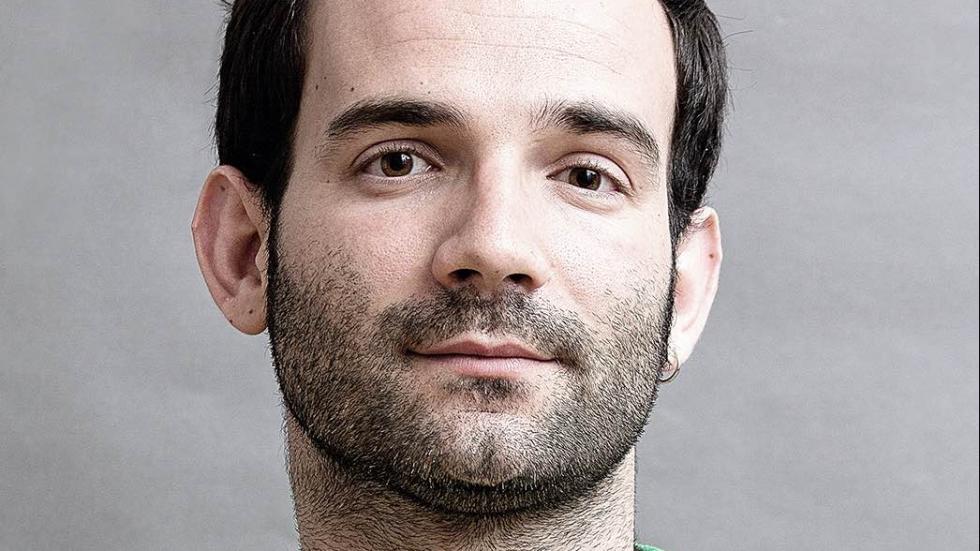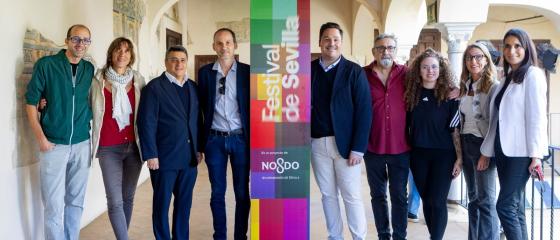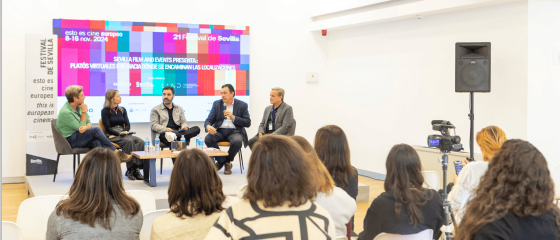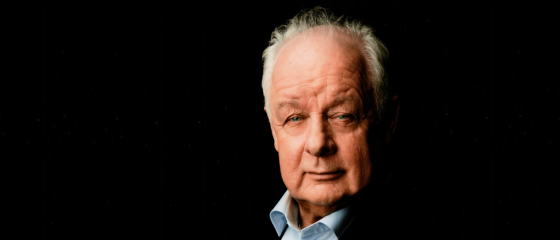It is one of the greatest productions in the Official Selection of the 17th edition of the SEFF. The year of the discovery, a new feature film by Luis López Carrasco, arrives with the great prize from the International Festival Cinéma du Réel under his arm.
The Murcian filmmaker maintains his style, which he defines as a heterodox mix between fiction and non-fiction, leading us to travel in time, both in a real and simulated way, to the Spain of 1992. Those were the times of the Barcelona Olympics and the Seville Expo, when the political powers were getting their teeth into it. However, they also looked elsewhere when facing unsolved systemic problems.
For instance, in Cartagena, workers from different companies, who saw their jobs and their future in danger, protested peacefully for weeks. Until the police acted decisively and a revolt broke out that ended with the burning of the autonomous parliament of Murcia. Some of those workers are now sitting in front of López Carrasco's camera to remember those events. But The Year of Discovery goes beyond that: it also offers the testimonies of the following generation, the one scarred by the economic crisis of 2008, young people without hope or resources who struggle to survive in a country that does not look up. In this way, the filmmaker suggests a mirror game between yesterday and today, giving voice to those who are silenced by the system, in a rather uncomplimentary look at contemporary Spain.
In The Year of the Discovery a dialogue is established between the testimonies that witnessed the workers' revolts in the Cartagena of 1992 and some representatives of the generation destroyed by the crisis of 2008. The message is clear: the same people are always involved.
A fundamental idea was to link two traumatic historical moments (1992 and the present) through the social class that had suffered them the most, in order to see how the emotions and experiences associated with a crisis can be transposed to different generations, as if that cycle would never stop. There are moments in the film when one of the participants talks about how the crisis affected him, we do not really know which of the crises he is referring to. However, the experience of vulnerability and pain, but also of strength and resistance, is unique and unforgettable. Many times crises are matters that happen "to others".
This confusion, as for, which crisis they are referring to?, is driven from the staging. On the one hand, you use a domestic image format, and for a long time you stimulate the doubt of whether those characters who smoke in the bar and talk to the camera are filmed now or then. Even the looks of the current testimonies seem out of date. Was there any recreation, "costume and makeup", looking for that analogy?
The idea was to portray some people in a space that could belong (for a good part of the film) to two times: to the past and to the present. When does the film happen exactly? Well, it is something that happened, but at the same time is still happening (and beyond Cartagena and La Union). For that reason we selected a location that was later staged and rigged by the art department; the participants, despite "playing themselves" were characterized and dressed so that their appearance could be credible in both times. This temporal ambiguity was important. In editing we edited the entire first section of the film, so that the most contemporary elements did not appear.
How did you prepare those conversations from the current testimonies? And, I don't know if it's an anecdote, but why is there so much smoke, so much tobacco, in the film?
We found most of the participants in castings organized in neighboring associations. We asked them questions about their family origins, their work, their neighborhood and their future plans, the same questions that we later nurtured on film. There was a first phase in which the person spoke individually (with me, with Sandra the assistant director or with Raúl, the scriptwriter) and then we would add more participants to start the discussions and we would propose different topics related to the neighborhood, employment, politics... although we spent enough time filming for the conversations to evolve in unexpected directions and we ended up talking about education, the languages used in the country, the territorial issue, Francoism, etc... As for the smoke, it is related to the high rates of smoking in these towns and the image we have of a bar in the 90s. But smoke is something that appears repeatedly throughout the film, in different forms, with different meanings. One possible clue is the dream with which the film begins.
What were you looking to do with the split screen? And why are there some moments when you don't actually use it?
In the three dreams of the film the screen is centered, the character is alone, floating in the dark. The decision for the double screen came during the editing process, when we saw the material that had been recorded using two cameras. We thought it was a good way to amplify the space and strengthen the experience of inhabiting a bar, listening to a conversation, observing a table, perceiving how the other customers also listen to what is being said. The atmospheric experience of being in that space became more fluid, more organic. Although it is true that later we developed this idea of the double screen to generate all kinds of associations: to show at the same time characters that look alike but with different ages, so that each individual appears surrounded by all the clientele but at the same time is in solitude, so that in the discussions the reactions between characters are more intertwined, to link the archive material within the story, to introduce maps, texts. The process was very complicated, to be honest.
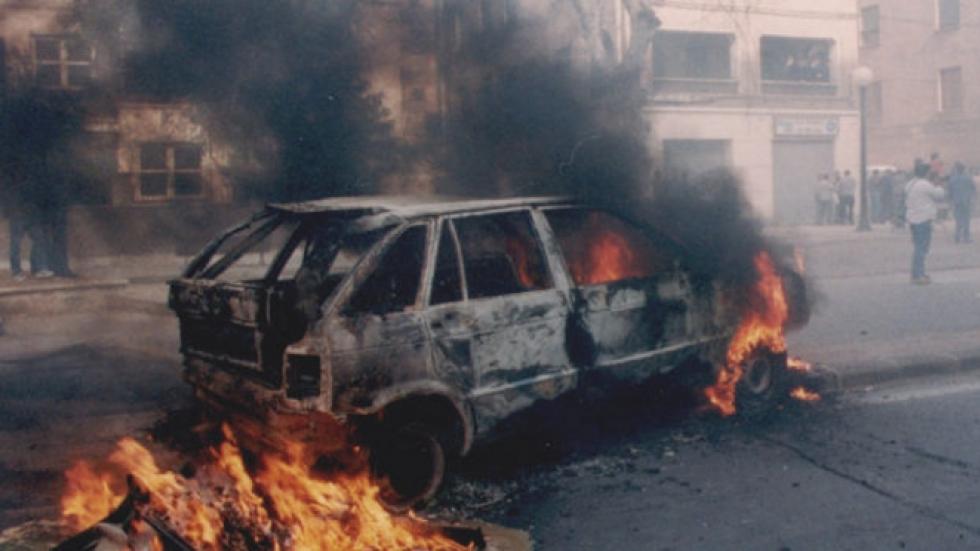
Did the idea you had in your head initially changed before filming? or once you were handling the footage? I understand that the editing process could be very complicated...
Well, there were aspects that we didn't expect, such as the appearance of racist or nostalgic discourses about Francoism. But, that' s precisely what the shooting was about, to produce the right conditions for a group of people, through their interaction, to take us in unexpected directions. At the same time, however, one of my obsessions was to recreate stories and feelings that had been narrated to me previously, in a casting, in a concert, in a bar. How to portray people who reminded me of childhood friends, of family, how to portray the place I came from. So in a way the film is very similar to what I had already experienced around me. Although I talk mostly about industrial worker life, which is a distant subject, there are many elements that are part of my memory.
This is a film with a huge political component. There is a strong message against the laziness, or inability, of the political parties and an unkind look at the police. Cinema against the institutions, and at a time of pandemic that has polarized Spanish society much more. Do you agree? How do you think the film can be received?
I don't know if it is a film against institutions (or against the use of some institutions), and I don't know if the look at the police is kind or not. At all times we have tried to ensure that each person who appears can develop his or her discourse long enough so that, despite the fact that as a spectator you may not agree, you can understand why he or she says what he or she says and gives his or her opinion. We have tried to make a film that, in its breadth, captures a multitude of stories, spanning eight decades. The memory of a community, the future of work, the survival of democracy, the rise of the ultra-right... are all aspects that are in the film, but all of that is embodied through a multitude of characters that take you into very personal, very confessional territory. I know that the people who see the film spend many days remembering and dreaming about what they were doing in the 90s. But at the same time it is a film that constantly looks to the future. What are the alliances that we can establish between different human groups that right now are disconnected from each other? That's the question I ask myself when I watch the film.
For those who are reading us, one might get scared when they notice that the film is 200 minutes long. What do we tell them?
Well, that is like watching three episodes of Game of Thrones or the finale of Masterchef, but this movie is about us!



